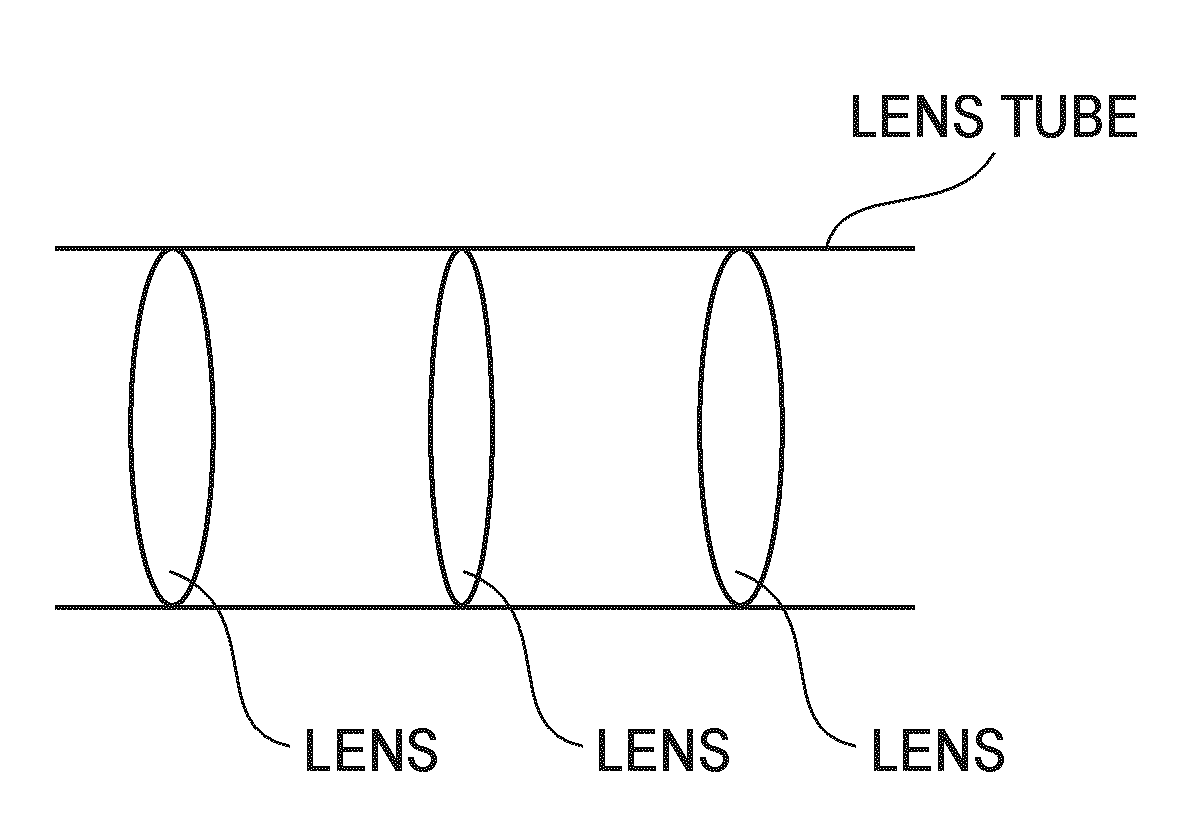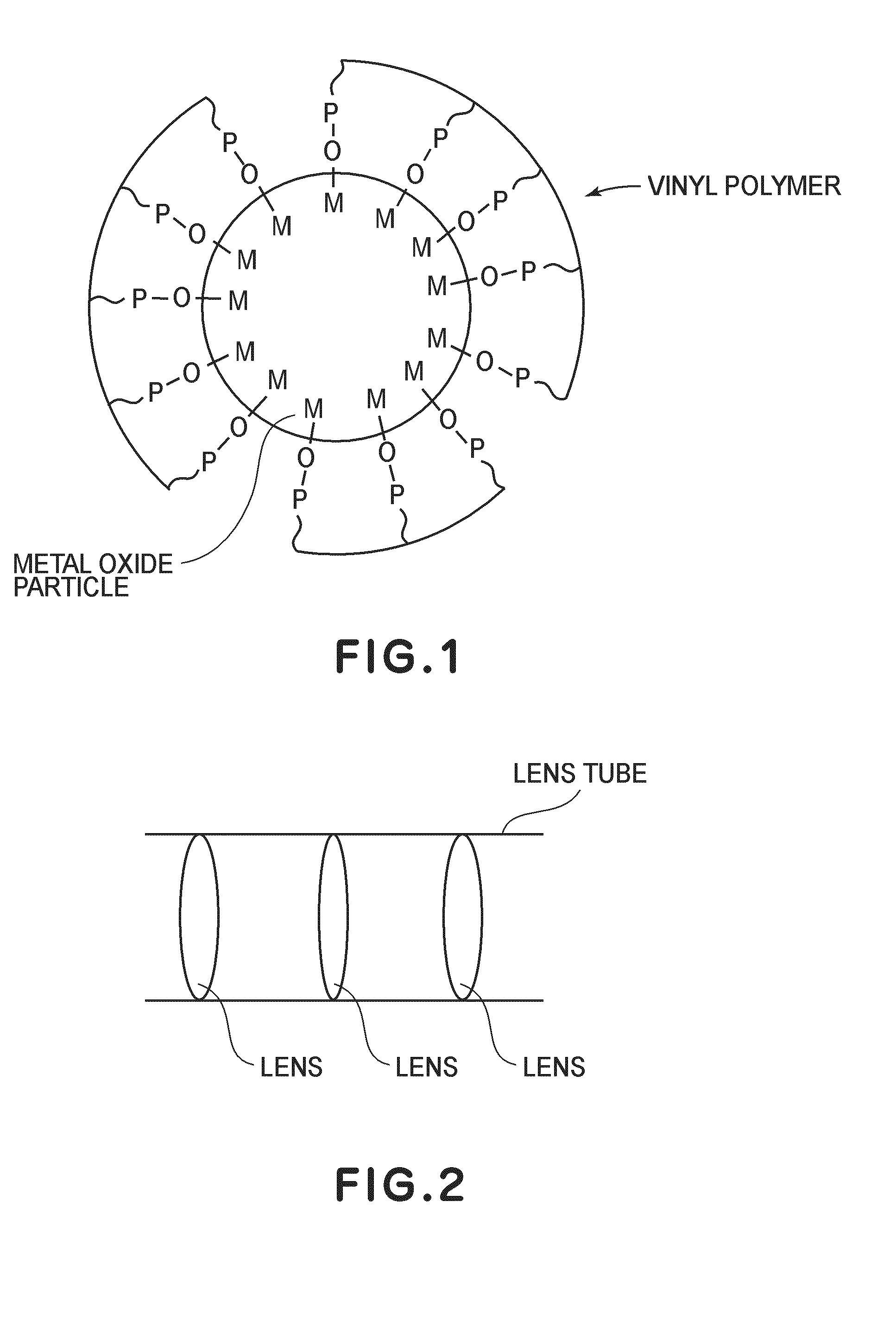Nano-oxide particles and production process thereof
- Summary
- Abstract
- Description
- Claims
- Application Information
AI Technical Summary
Benefits of technology
Problems solved by technology
Method used
Image
Examples
Example
Example 1
[0060]A mixture solution was prepared by mixing 40 g of aqueous TiO2 dispersed sol (solid content: 6%, average particle size: 5 nm) and 60 g of 1%-aqueous solution of phosphate represented by the following formula (10):
[0061]The mixture solution was placed in a flask and solvent substitution with propanol was performed under heating. At a time when a total amount of the dispersion solution was 110 g and a concentration of propanol in the solvent reached about 50% (about 97% of the dispersion medium), 0.01 g of potassium persulfate (K2S2O8) was added as a polymerization initiator. After the resultant mixture was polymerized for 10 hours at 50° C., the polymerization mixture was cooled and added in a hollow membrane, which was externally washed sufficiently with a 50%-aqueous propanol solution to remove unnecessary components. While heating the hollow membrane, the solvent was substituted with methyl ethyl ketone (MEK). Finally, concentration was performed to obtain about 50 ...
Example
Example 2
[0063]A mixture solution was prepared by mixing 20 g of aqueous SnO2 dispersed sol (solid content: 10%, average particle size: 2 nm), 25 g of 4%-aqueous solution of phosphate represented by formula (11) shown below, and 25 g of 1%-methacrylic acid solution:
[0064]The mixture solution was placed in a flask and solvent substitution with propanol was performed under heating. At a time when a total amount of the dispersion solution was 95 g and a concentration of propanol in the solvent reached about 50% (about 96% of the dispersion medium), 0.01 g of potassium persulfate (K2S2O8) was added as a polymerization initiator. After the resultant mixture was polymerized for 10 hours at 50° C., the polymerization mixture was cooled and added in a hollow membrane, which was externally washed sufficiently with a 50%-aqueous propanol solution to remove unnecessary components. While heating the hollow membrane, the solvent was substituted with MEK. Finally, concentration was performed to o...
Example
Example 3
[0066]A mixture solution was prepared by mixing 20 g of aqueous ZrO2 dispersed sol (solid content: 10%, average particle size: 5 nm) and 50 g of 1%-aqueous solution of phosphate represented by the following formula (12):
[0067]The mixture solution was placed in a flask and solvent substitution with propanol was performed under heating. At a time when a total amount of the dispersion solution was 80 g and a concentration of propanol in the solvent reached about 50% (about 96% of the dispersion medium), 0.3 g of methyl methacrylate (monomer) was added and stirred for 5 hours. Thereafter, to the mixture, 0.01 g of potassium persulfate (K2S2O8) was added as a polymerization initiator. After the resultant mixture was polymerized for 10 hours at 50° C., the polymerization mixture was cooled and added in a hollow membrane, which was externally washed sufficiently with a 50%-aqueous propanol solution to remove unnecessary components. While heating the hollow membrane, the solvent wa...
PUM
| Property | Measurement | Unit |
|---|---|---|
| Particle size | aaaaa | aaaaa |
| Particle size | aaaaa | aaaaa |
| Dispersion potential | aaaaa | aaaaa |
Abstract
Description
Claims
Application Information
 Login to view more
Login to view more - R&D Engineer
- R&D Manager
- IP Professional
- Industry Leading Data Capabilities
- Powerful AI technology
- Patent DNA Extraction
Browse by: Latest US Patents, China's latest patents, Technical Efficacy Thesaurus, Application Domain, Technology Topic.
© 2024 PatSnap. All rights reserved.Legal|Privacy policy|Modern Slavery Act Transparency Statement|Sitemap



